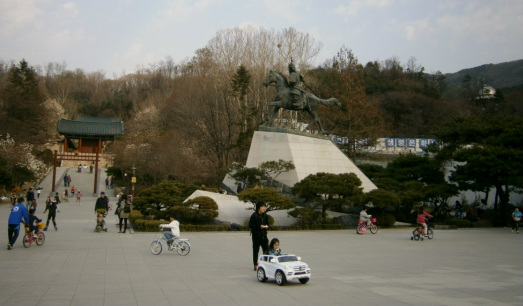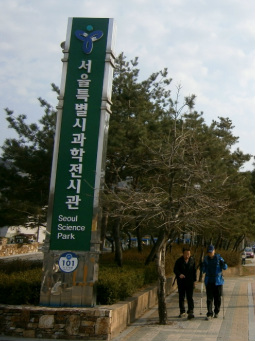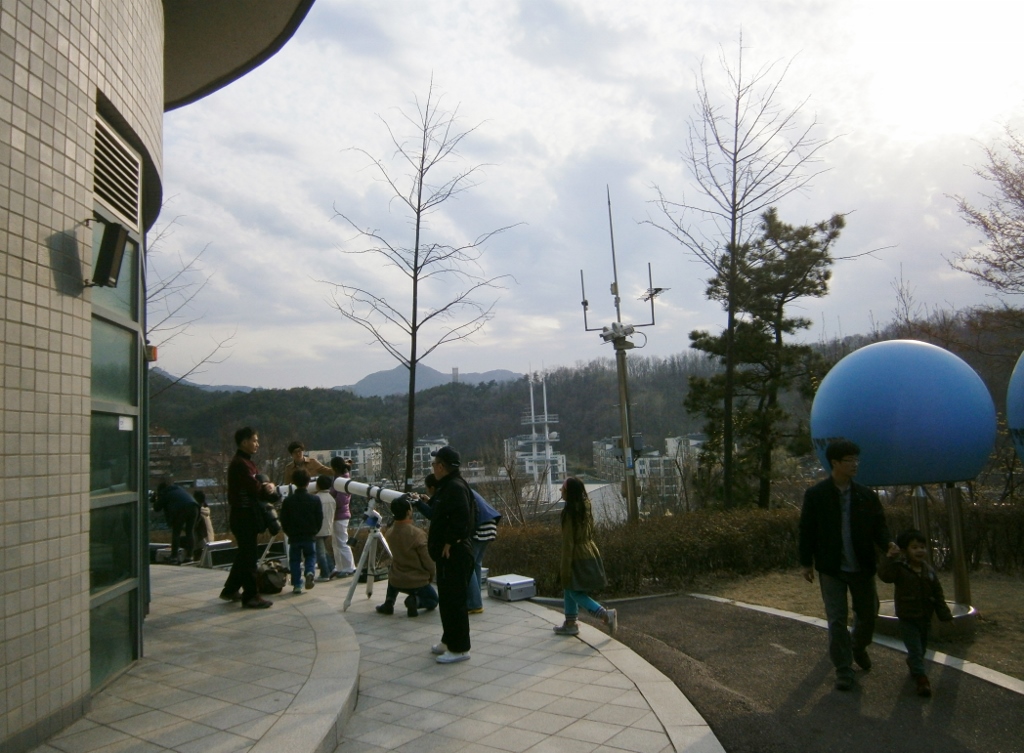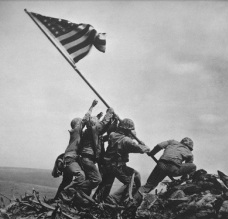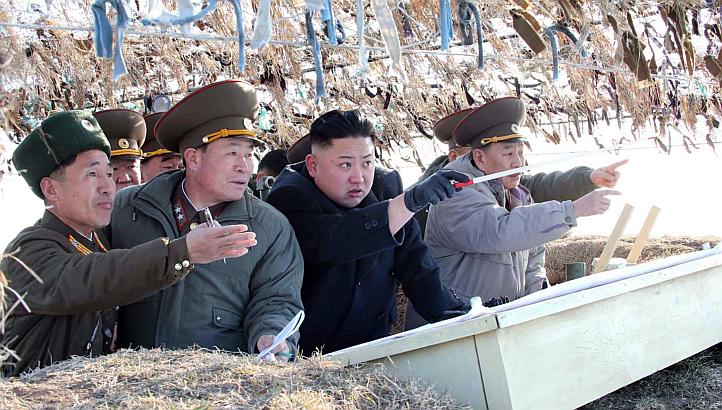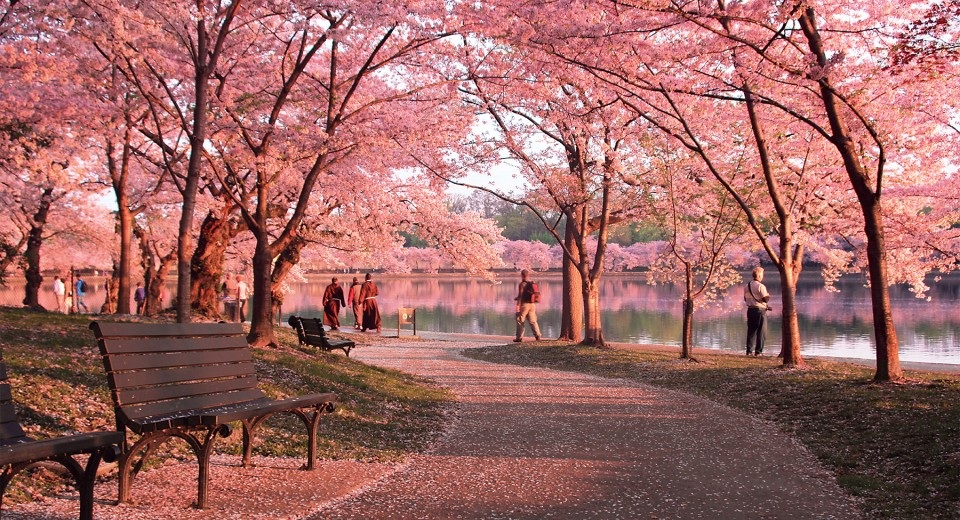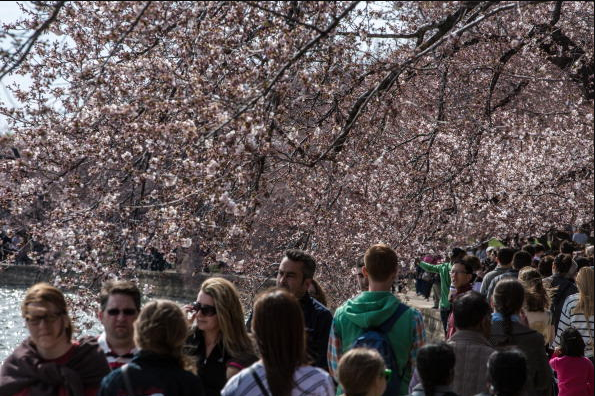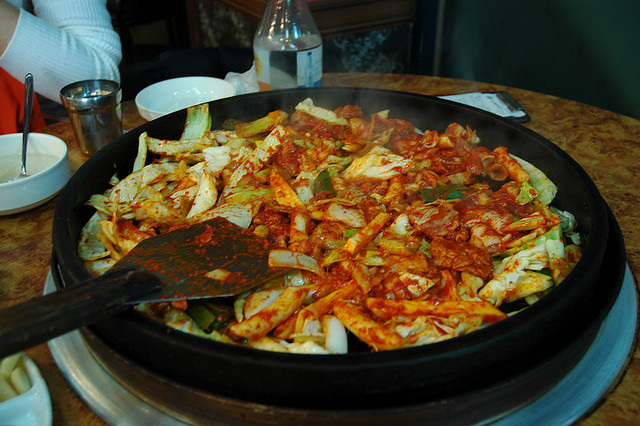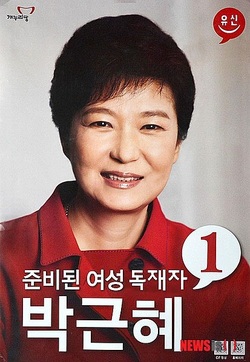According to an
article, 2.4 million Japanese died while under arms in WWII: 300,000 at sea and 2.1 million on land.
The remains of over a million of them are unknown, even in 2013. Part of the reason why:
“You might say Japan was characterized as a sort of criminal state that disturbed the world,” he said. “It has been difficult for Japan to openly honor people who fought in the war [WWII] and died.”
 Screenshot of Battle of Iwo Jima’s wiki page.
Screenshot of Battle of Iwo Jima’s wiki page.
Japanese deaths were 99% of pre-battle strength
Many of these Japanese soldiers died on islands where they made hopeless total-defensive-stands, famously at
Iwo-Jima.
(Note: I see that up to a million more Japanese, civilians, died from the firebombings of their big cities, and in the two nuclear attacks of August ’45. I’ve also heard that one-in-seven of the Hiroshima deaths were Korean laborers).
Japan lost 22,000 dead at Iwo Jima. (See left). Most of the dead defenders lay in unmarked graves until 2010, according to the article:
In 2010 left-leaning then-Prime Minister Naoto Kan launched a three-year project to find remains on Iwoto island, better known as Iwojima, the site of one of bloodiest battles at the end of the war. […]
“It is a national duty to collect remains of those who died for Japan,” Kan said at the time. By thoroughly carrying out the recovery program on Iwoto [Iwo-Jima], Japanese territory, I hope to use the momentum for foreign recovery programs,” he said.
 Land Area of Iwo Jima, superimposed on Arlington, VA.
Land Area of Iwo Jima, superimposed on Arlington, VA.
Bound by Arlington Blvd (U.S.50) and Lee Highway (U.S.29)
Area in green = 20 sq. km = 7.7 sq. miles
How Small is Iwo Jima? It’s very small, only
eight square miles, or 30% as large as Arlington County, my place of birth.
Eight square miles is about equal to the area in Arlington County between Arlington Blvd. and Lee Highway, excluding Ft. Myer. See the map at left. (I calculated that area using this tool).
It’s hard to imagine 100,000 men fighting for weeks on an island so small, with 30,000 of them dying.
(Incredibly, it seems that 4-5% of all U.S. military deaths in the Pacific Theater were at Iwo Jima, a single island).
 Iwo Jima Memorial of Arlington, Virginia
Iwo Jima Memorial of Arlington, Virginia
I have walked all around the green-highlighted area above, many times. It’s not that big. There is a bike path that runs from one end of that area to the other.
At the extreme east of the green-shaded area stands, incidentally, the Iwo Jima Memorial — My familiarity with that memorial is what caught my eye in the article. My dad always likes going to “Iwo Jima” (the memorial, not the island).
One thing I can say about the Iwo Jima Memorial is that it’s more than a bit hard to find, to actually get to, on foot. If you approach by foot, the ‘hazards’ you face are many: busy roads, blockages, fences, unclear lines of vision as you approach, hills — It calls to mind the physical obstacles, confined spaces, and danger that the men would’ve had in February and March of 1945. I’ve wondered for years whether this was an intentional feature of the memorial’s design or not. If so, it was a success.



